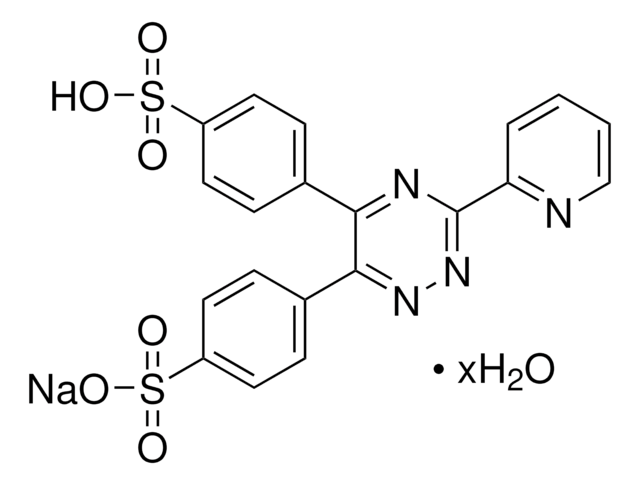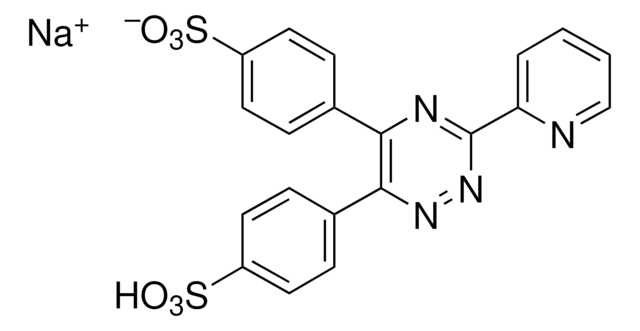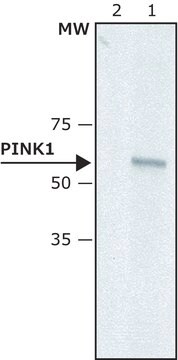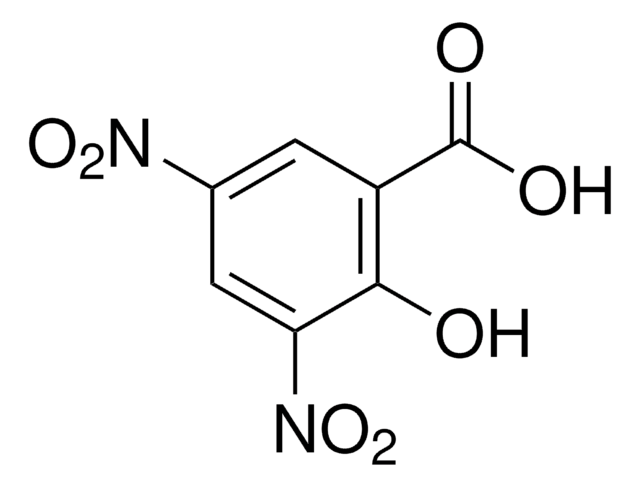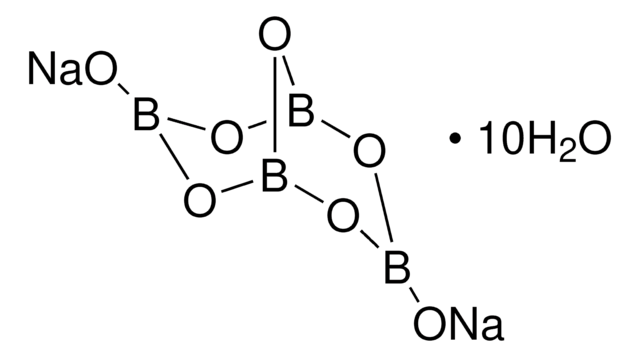P5338
3-(2-Pyridyl)-5,6-diphenyl-1,2,4-triazine-4′,4′′-disulfonic acid sodium salt
Powder
Sinônimo(s):
5,6-Diphenyl-3-(2-pyridyl)-1,2,4-triazine-4′,4″-disulfonic acid sodium salt, PDT disulfonate
About This Item
Produtos recomendados
Nome do produto
3-(2-Pyridyl)-5,6-diphenyl-1,2,4-triazine-4′,4′′-disulfonic acid sodium salt, BioXtra
linha de produto
BioXtra
Nível de qualidade
Formulário
powder
Impurezas
≤0.0005% Phosphorus (P)
≤0.1% Insoluble matter
pf
≥300 °C
traços de ânion
chloride (Cl-): ≤0.1%
traços de cátion
Al: ≤0.001%
Ca: ≤0.01%
Cu: ≤0.0005%
Fe: ≤0.0005%
K: ≤0.005%
Mg: ≤0.001%
Pb: ≤0.001%
Zn: ≤0.0005%
aplicação(ões)
diagnostic assay manufacturing
hematology
histology
temperatura de armazenamento
room temp
cadeia de caracteres SMILES
[Na+].OS(=O)(=O)c1ccc(cc1)-c2nnc(nc2-c3ccc(cc3)S([O-])(=O)=O)-c4ccccn4
InChI
1S/C20H14N4O6S2.Na/c25-31(26,27)15-8-4-13(5-9-15)18-19(14-6-10-16(11-7-14)32(28,29)30)23-24-20(22-18)17-3-1-2-12-21-17;/h1-12H,(H,25,26,27)(H,28,29,30);/q;+1/p-1
chave InChI
ZGVNYCXXBQPDPQ-UHFFFAOYSA-M
Procurando produtos similares? Visita Guia de comparação de produtos
Descrição geral
Aplicação
It has also been used in ABTS radical scavenging assay to determine the antioxidant activity of honey samples.
Código de classe de armazenamento
11 - Combustible Solids
Classe de risco de água (WGK)
WGK 3
Ponto de fulgor (°F)
Not applicable
Ponto de fulgor (°C)
Not applicable
Equipamento de proteção individual
Eyeshields, Gloves, type N95 (US)
Escolha uma das versões mais recentes:
Já possui este produto?
Encontre a documentação dos produtos que você adquiriu recentemente na biblioteca de documentos.
Os clientes também visualizaram
Nossa equipe de cientistas tem experiência em todas as áreas de pesquisa, incluindo Life Sciences, ciência de materiais, síntese química, cromatografia, química analítica e muitas outras.
Entre em contato com a assistência técnica